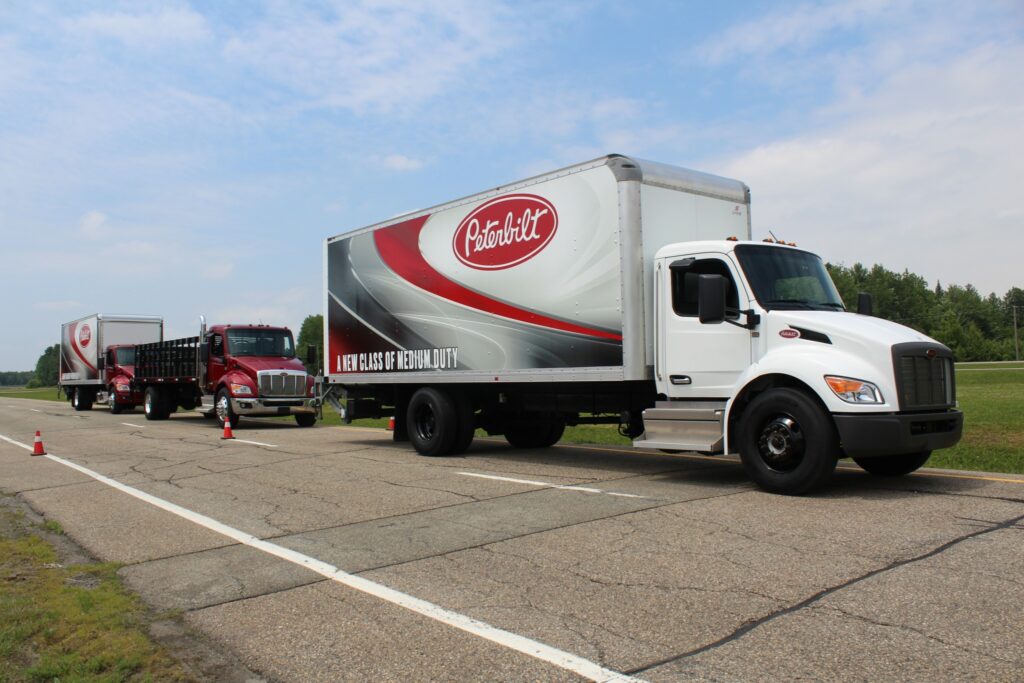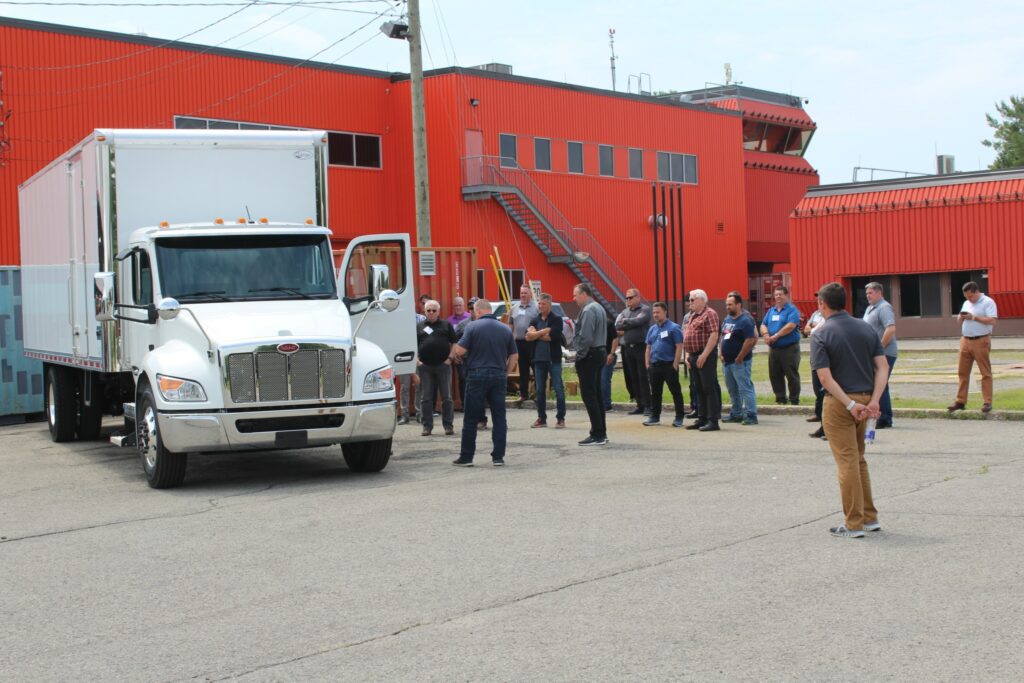A look inside Peterbilt’s medium-duty trucks and the Quebec plant that builds them
Paccar operates one of Quebec’s industrial gems in Sainte-Thérèse — a 425,000 sq.-ft. facility that manufactures medium-duty Peterbilt and Kenworth trucks.
The location itself was built in 1998-99, employs 1,000 workers, and has assembled more than 245,000 trucks since opening. It currently builds 40 trucks a day, although that’s down from a possible 75 trucks per shift because of several component shortages linked to supply chain difficulties.
It also remains one of Paccar’s most advanced assembly operations.

The OEM’s 2.1-meter cabs have since 2020 been made on a fully robotic line, where individual robots glide through their perfectly synchronized tasks, changing heads to transport parts, drill holes, and install rivets. And the plant itself is the only Paccar facility equipped for laser cutting — technology that makes it possible to drill a hole per second.
The site has clearly come a long way since the building was home to the Sicard snowblower business.
A test drive and walkaround
After the factory tour, we went to PMG Technologies’ main test track in Blainville for a first-hand look at some of the units produced on the assembly line.
Phil Hall, director of medium-duty marketing, joined me for a few laps around the track and a walkaround of a Model 536 (Class 6) Peterbilt.
My first impression after climbing into the cab: the visibility is excellent. The large glass surfaces and sloped hood offer a clear look at the space in front of the truck.
“This is an important aspect for a pickup and delivery truck in the city,” Hall says, adding that the windshield is 64% larger and the side windows are 35% larger than on the previous Peterbilt model.
Another observation: the cab is really quiet. No wind noise enters the cab and you can barely hear the engine humming. Hall explains that the air intake is mounted on the engine and not on the firewall, which greatly reduces vibrations. We were able to talk normally at cruising speed.

Advanced displays
A lot of work went into the seven-inch digital display that sits behind the steering wheel, placing automotive-like multi-function controls at the driver’s fingertips. “It keeps your eyes on the road at all times. That’s very important, because distractions cause accidents. Sometimes safety is about the little things,” Hall says.
Unlike the blue backlighting typically found in vehicle displays, Peterbilt’s use of amber backlighting is also easy on the eyes.
Customer feedback played a key role in the layout of features like the B Panel on the dash, too.
“Customer input was very important in the design of this truck. Customers who come from both the pickup and delivery segment and the vocational segment … have very different needs,” Hall says.
An air brake knob that’s placed within easy reach is an example of design features that make a difference.
“During pickups and deliveries, this button is used 60 times a day, so if it’s not positioned correctly, the wrist will get tired and injuries like tendonitis can result,” he says.
The most-used controls are placed closest to the driver, while those that aren’t touched much during the day — such as the radio and HVAC controls — are further back.
Storage and more
There’s no glovebox per se, but there is an open storage compartment “because customers have said the glovebox opening panel tends to break or loosen up.”
All Peterbilt medium-duty trucks feature the new aluminum cab with a width of 2.1 meters and a roof height of 74 inches for the flat-top version, and 78 inches for the curved roof (four inches higher than the previous version). The new cab is eight inches wider than the previous generation and allows three adults to sit comfortably.
Underneath, Peterbilt opted for a D-shaped fuel tank that maximizes available fuel volumes. Just in front is the step, which is offset and closer to the ground, allowing safe and ergonomic cab access. The steps are also non-slip and perforated so that no debris can accumulate on them.
Three hood configurations are available. The three-piece composite hood is easy to open, requiring 15 pounds of pulling effort compared to 65 pounds for the previous model. A locking feature prevents the hood from inadvertently closing as well.
Recognizing the importance of ease of maintenance and uptime, Peterbilt engineers developed a three-piece bumper option that allows only the damaged section to be changed in the event of a breakage. The headlight design allows a bulb to be changed in less than five minutes, the front collision radar is protected in the bumper to avoid having to recalibrate it in the event of a collision, and the mirrors are mounted on the cab instead of the door to ensure greater long-term stability.
Have your say
This is a moderated forum. Comments will no longer be published unless they are accompanied by a first and last name and a verifiable email address. (Today's Trucking will not publish or share the email address.) Profane language and content deemed to be libelous, racist, or threatening in nature will not be published under any circumstances.